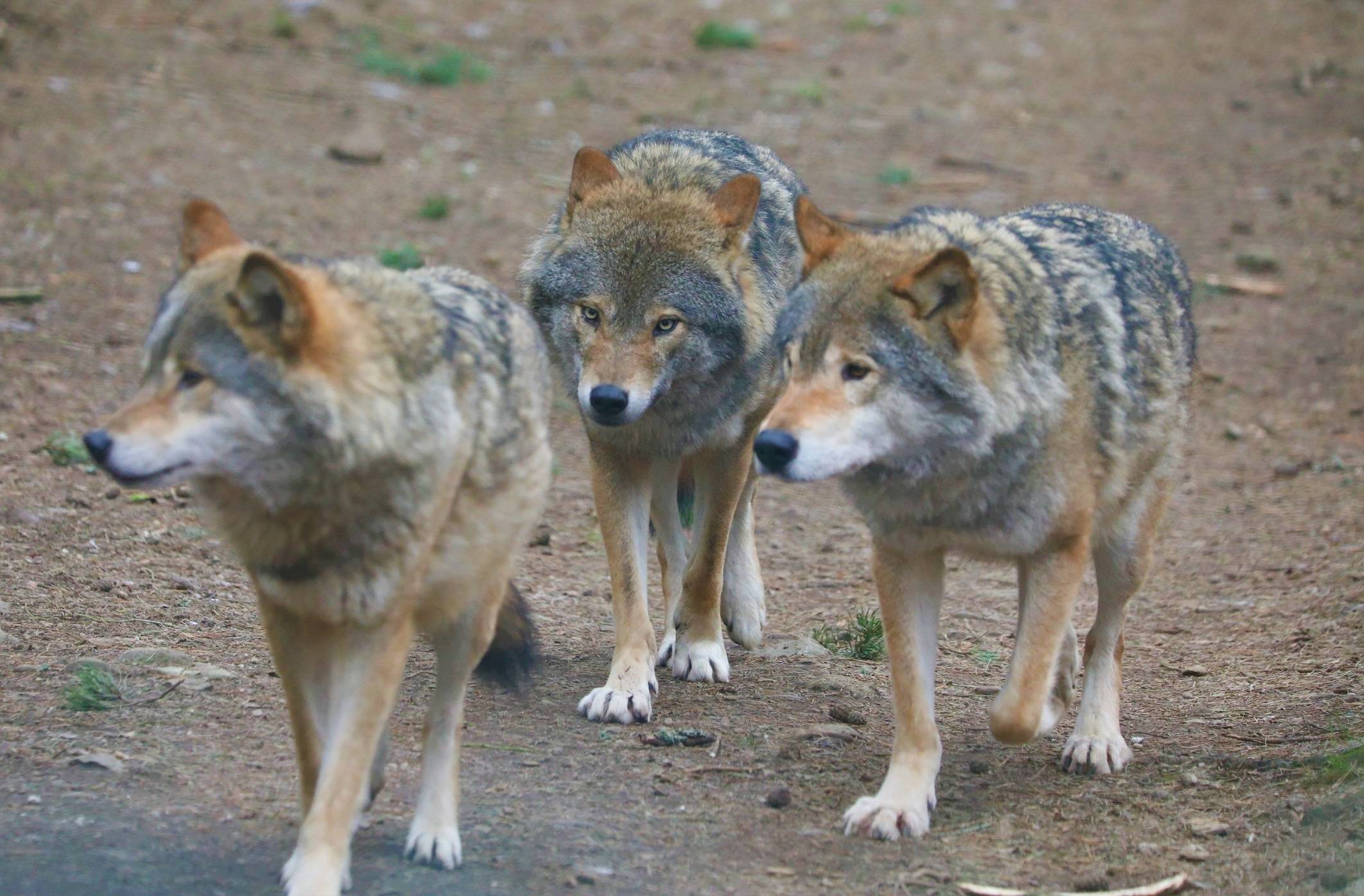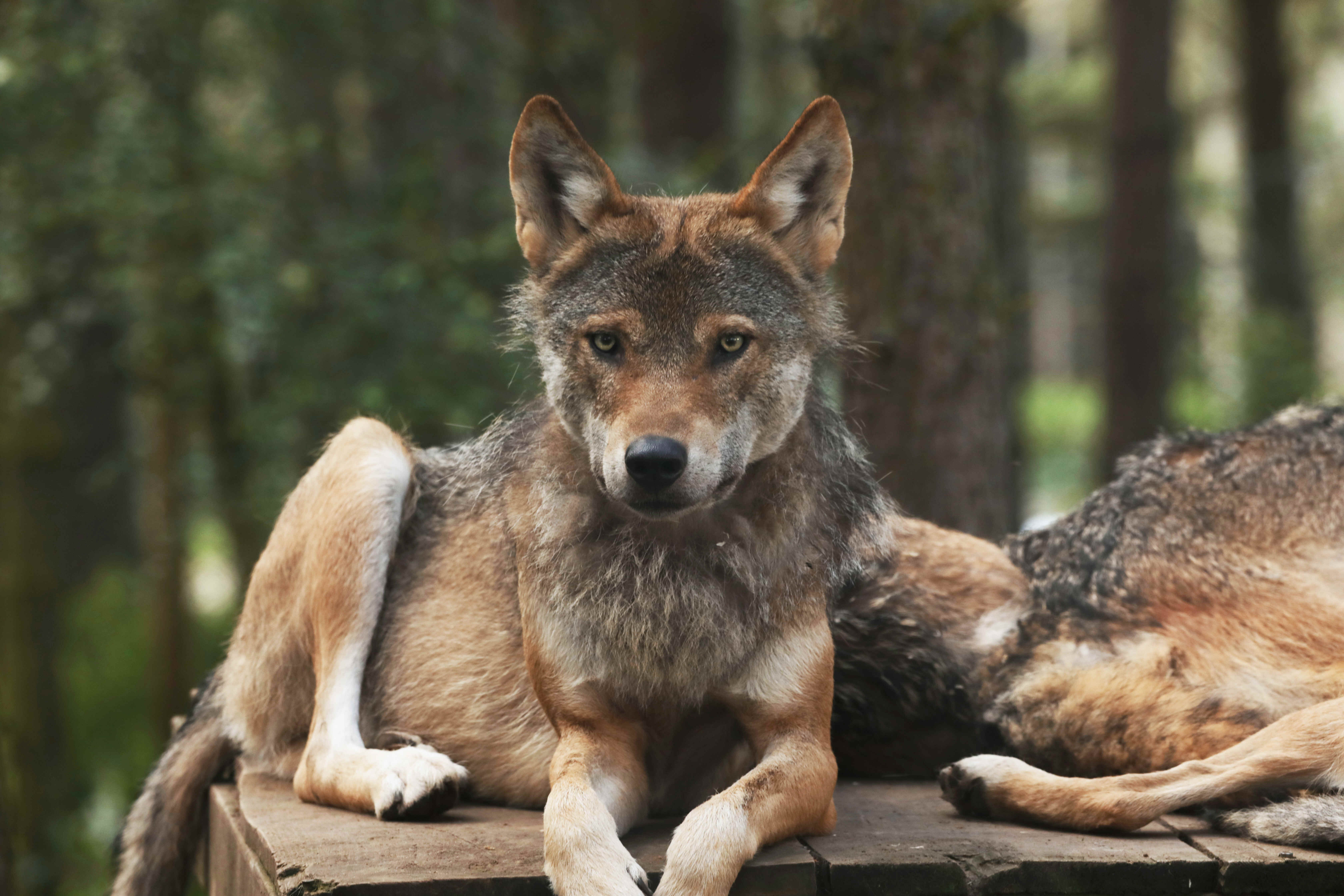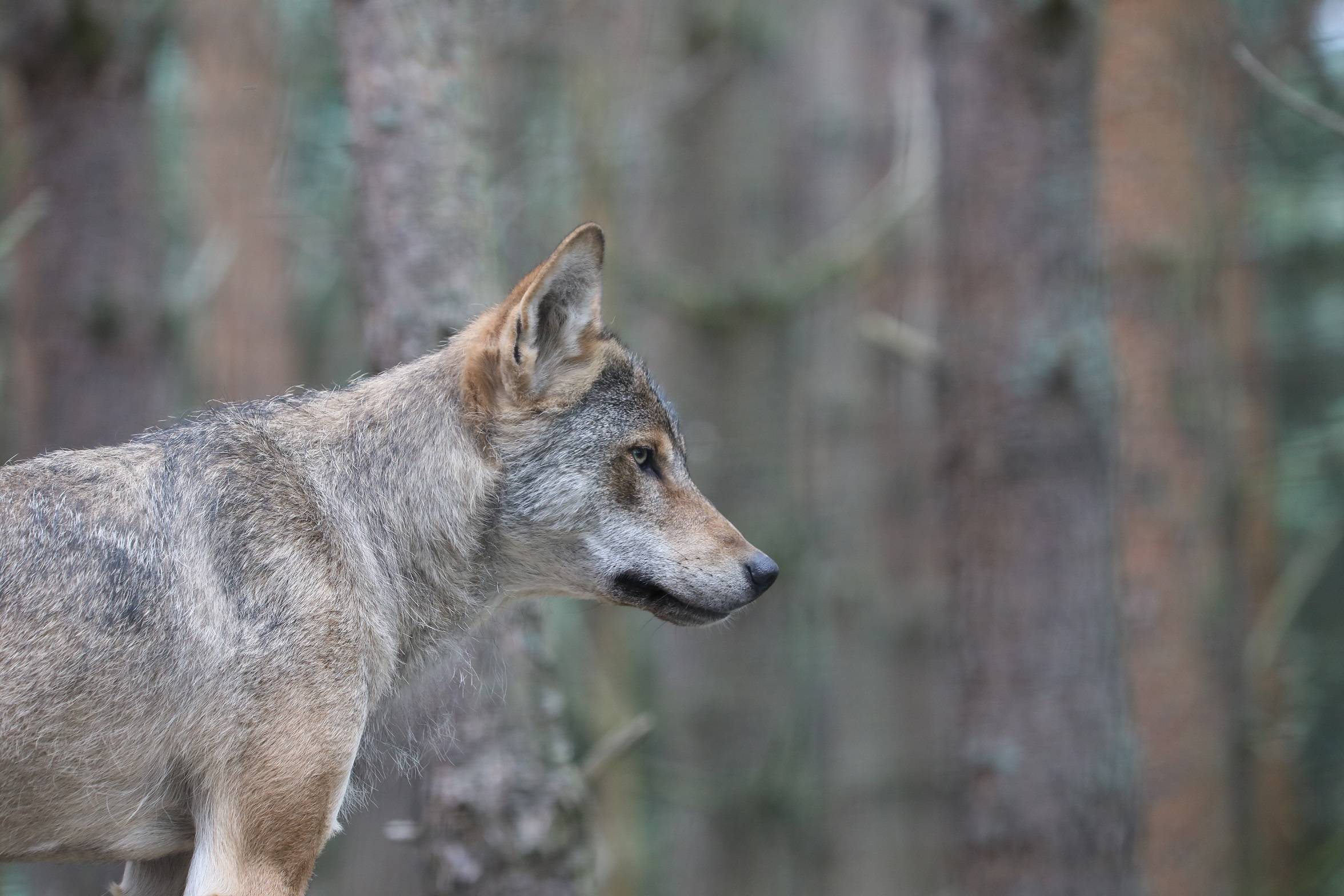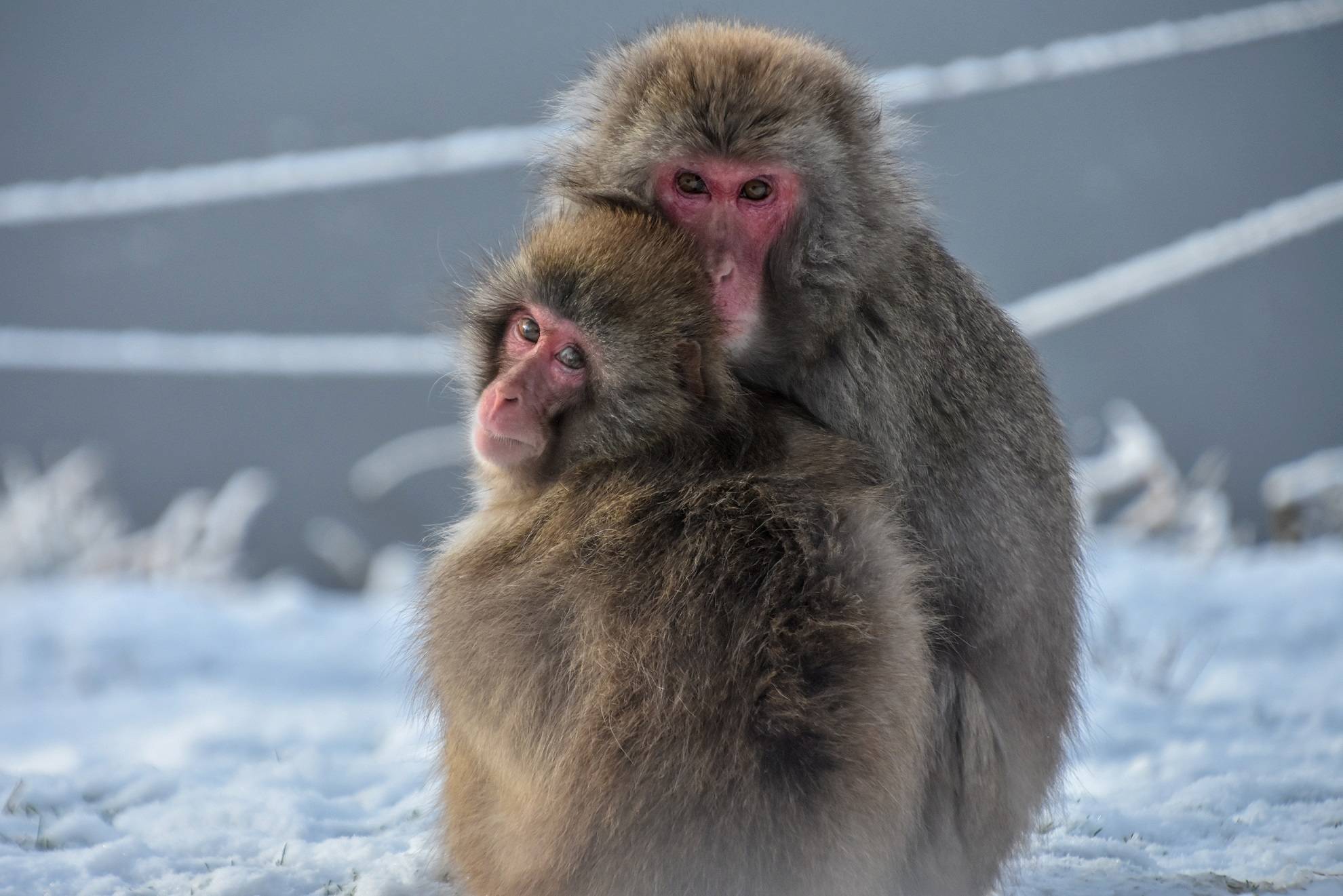European grey wolf
Canis lupus lupus

We have a small pack of European grey wolves at the park - Merrick, Storr, Beinn and Chonzie.
You can see them exploring in Wolf Wood. Our royal patron HRH The Princess Royal opened this habitat in 2010.
Wolves are one of the most influential ecosystem engineers. As a carnivore, they regulate prey populations, particularly large herbivores like deer. By hunting such animals, wolves help prevent overgrazing. This allows diverse plant life, including trees and shrubs, to recover and thrive. This then goes on to support insects, birds and small mammals, increasing biodiversity.
While grey wolves are not at threat of extinction on a global level, they are extinct in Scotland and the UK. This was due to hunting, habitat loss and conflict with humans in the late 1600s.
Population
Stable
Diet
Carnivore
Habitat
Forest
Fact file
Wolves live in tightly bonded packs. These family groups typically include parents and their offspring. Working together, they hunt, raise pups, and protect their territory
They use howls to communicate. Each wolf has a unique howl, allowing pack members to recognise one another. Howling also helps keep the group together and ward off rivals
Wolves are built for endurance and are capable of travelling over 30 miles a day in search of food. Their strong legs and stamina make them efficient long-distance hunters
Latest grey wolf news
View all news
13 Aug 2025
Five minute read

How we're helping
Like all the animals in our care, our wolves are amazing ambassadors for their relatives in the wild and help hundreds of thousands of people connect with nature every year. They encourage visitors to learn about the threats facing wildlife and the action they can take to help create a world where nature is protected, valued, and loved.
As a wildlife conservation charity, we care for the animals here at the park and work to protect species at risk around the world. From providing expertise in genetics and veterinary health to protecting wild places with local conservation partners, and even restoring threatened species to the wild, we are active where we are needed most.
Find out more about RZSS conservation
